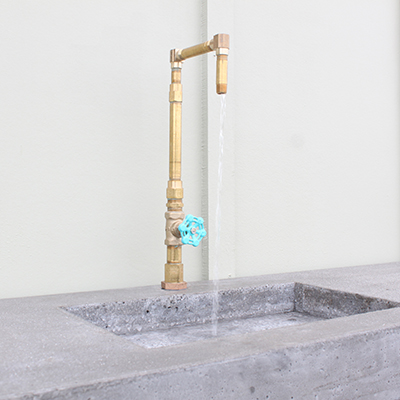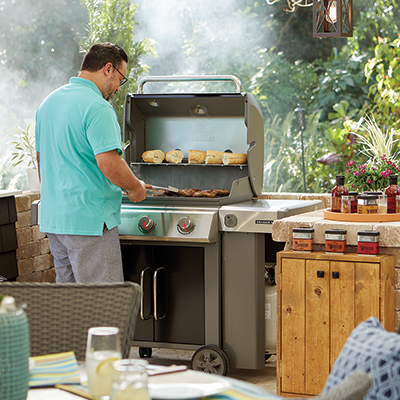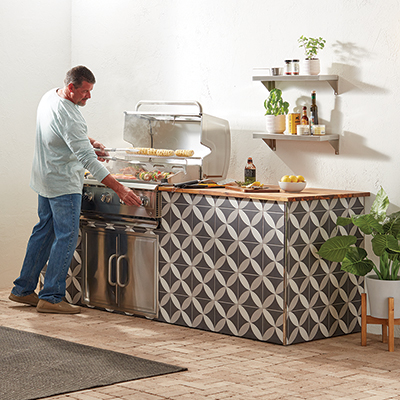How to Plan an Outdoor Kitchen

Last updated September 7, 2023
Outdoor entertaining is a great way to enjoy time with friends and family. Building an outdoor kitchen moves the whole process of meals in the great outdoors to the backyard or deck. You can build an outdoor kitchen with all the convenience of an indoor kitchen, keeping the work close to the grill and the cook spending more time among the guests.
Learning how to plan an outdoor kitchen will ensure that the building process goes more smoothly, no matter how you choose to complete the project.
Difficulty:
Beginner
Duration:
Over 1 day
Table of Contents
Pick a Location
Decide on a Layout
Draw Up Clear Plans
Consider Appliances
Additional Features
Pick a Location
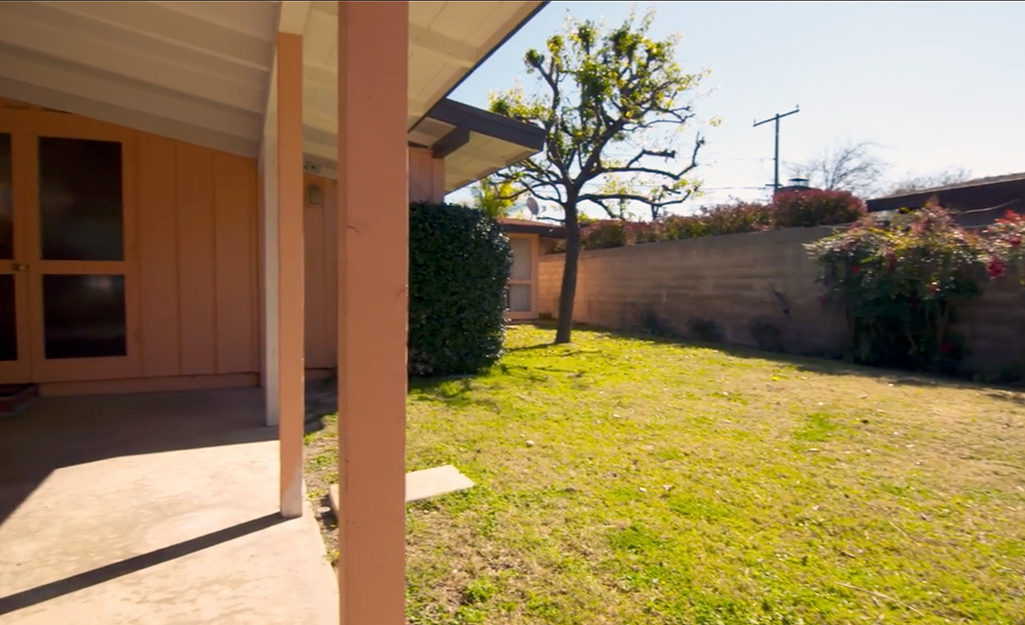
The first step in planning an outdoor kitchen is to figure out the best location for it. Ideally, the kitchen will be located right off the back door of your home. However, much depends on the layout and landscape of your house.
Be sure to take proximity to utilities into account. An outdoor kitchen should have easy access to electricity and water, and possibly gas lines, depending on what types of appliances you intend to install. In addition, the plan for an outdoor kitchen must take building codes seriously. Most building codes require that a grill or other outdoor heat source must be a minimum of 10 feet from the home.
Determine the square footage of your existing space. To find it, take the width and length of the patio or the space you intend to build on and multiply the two figures together. This will be the total outdoor living area.
Next, decide how you want to divide the space. You may want to reserve more space for outdoor seating or make the kitchen itself the larger area. You can also opt to make the two spaces equivalent. A lot depends on how you typically entertain and the number of guests you expect to comfortably host at a time.
Decide on a Layout
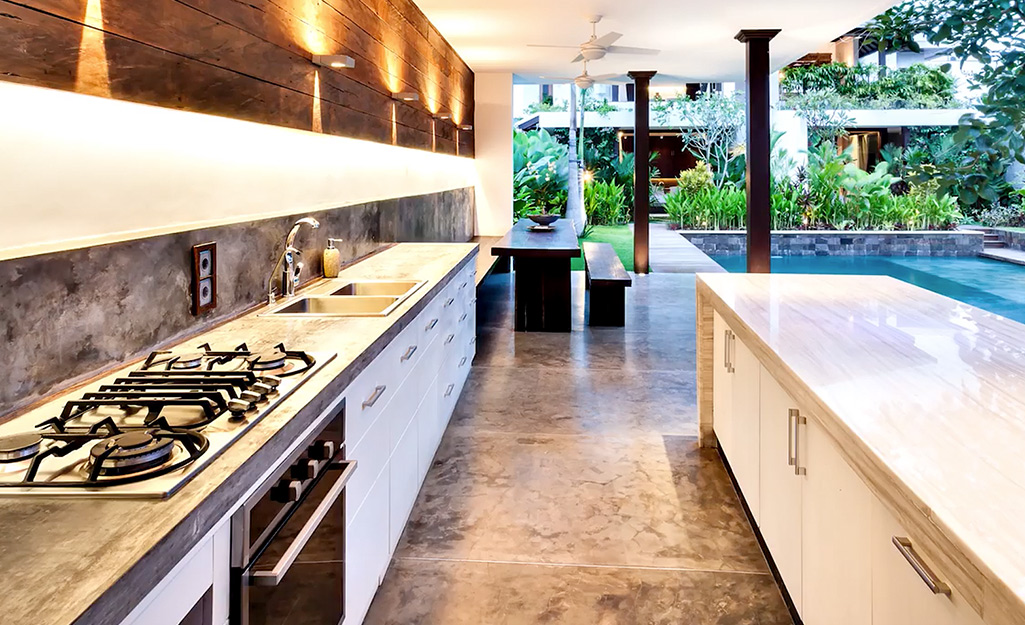
When planning an outdoor kitchen, think about how to lay out the kitchen itself. There are many different ways to lay out the design of an outdoor kitchen. The plan for the outdoor kitchen must account for how you typically cook and if you will need space for more than one person in the kitchen at a time.
- Linear: A linear kitchen lies in a straight line, usually along the back of the house. It is the simplest layout, often used for small outdoor spaces.
- Galley: A galley kitchen is designed as a corridor. Everything you need is aligned on either side of a single aisle. This design also saves some space, but can be difficult for more than one person at a time to navigate.
- L-Shaped: An L-shaped layout often has one area for food prep and another for cooking. The storage fits on either side.
- Triangle: A triangle layout puts the cooking appliance, food storage and outdoor kitchen sink at equal distance in a triangular shape. This design is considered by kitchen experts to be the most efficient option, particularly in kitchens that see a lot of use.
- U-Shaped: A U-shaped layout is great for large outdoor kitchens. This design gives plenty of counter space, making it easy to enlist kitchen helpers. No one will feel cramped.
- Kitchen Island: Most outdoor kitchen plans can accommodate a kitchen island. An island provides space for additional storage, prep surfaces and seating. In some instances, the kitchen island can also be used as space for additional cooking appliances, such as a grill island.
As you plan an outdoor kitchen, it might be helpful to look at the layout of your indoor kitchen. How efficiently do you cook in it day to day? Is it comfortable for all the cooks in your household? Are there any frustrations you run into as you use the kitchen? If you could make changes to your layout, what might they be? Use the answers to these questions to help you make design choices for the outdoor kitchen.
Draw Up Clear Plans
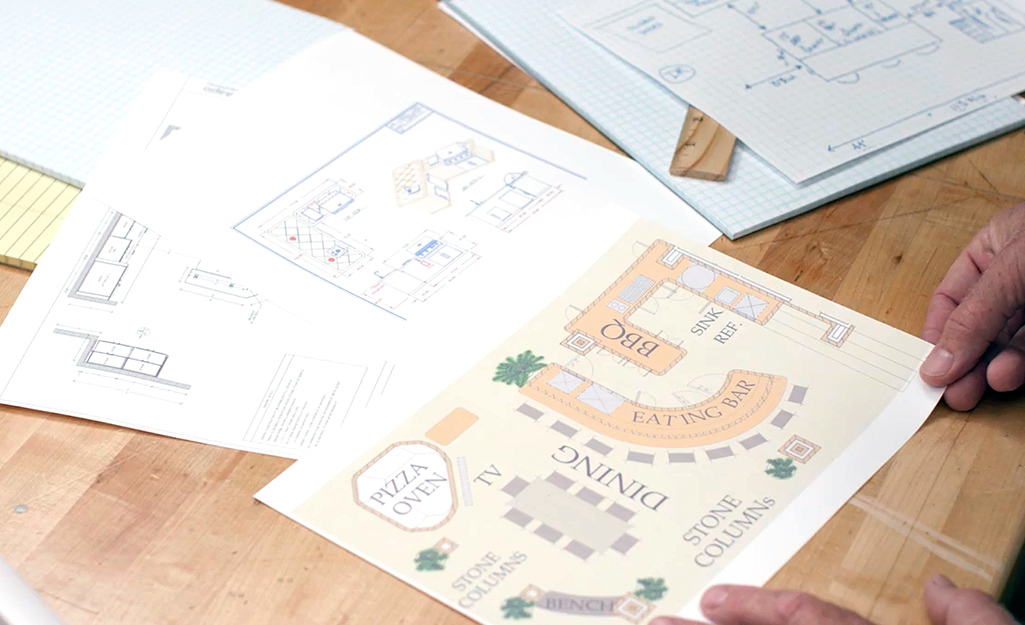
Once you’ve decided how to plan your outdoor kitchen in your mind, you’ll need to get those idea solidly on paper. You’ll need a clear plan that specifies the location and dimensions of the outdoor kitchen. Locations of the water lines and electrical outlets need to be indicated, and the intended placements of all the cabinets, countertops, appliances, seating and accessories.
If you are creating a simple outdoor kitchen, you can use graph paper to create a scale drawing. However, if your design goal is more complex, work with a professional designer. They can use software to create a full design plan that includes all the information you would need for a build. They may also be able to advise on materials. Natural stone tile backsplashes or ceramic tile may sound ideal, but might not wear or weather well in your outdoor climate. A professional designer may also be able to spot any problems with the proposed plans and make suggestions that will save time and money once the build becomes a reality.
Consider Appliances
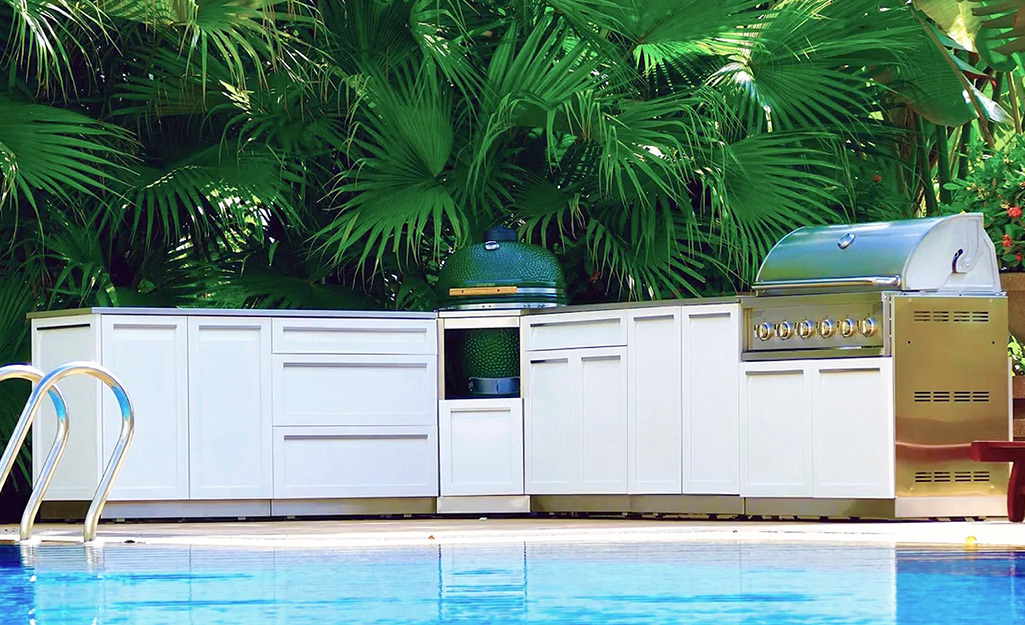
When considering how to plan an outdoor kitchen, many people start with thinking about the appliances, because that is the fun part. Dreaming of your cooking adventures and your outdoor evenings may have you imaging an elaborate setup. It is important to understand the space and design constraints you are working with before picking your appliances.
Other choices will also inform your appliance choices. Your cooking habits, your budget and even your climate can all be factors.
For most outdoor kitchens, the grill will be the centerpiece, whether a gas, electric or pellet grill. In some cases, a smoker may be equally important, or perhaps a charcoal smoker as a replacement for a grill. An outdoor refrigerator will also be a valuable addition, both for keeping ingredients fresh and for storing refreshments for guests. Keep in mind that this is usually not a full-sized fridge. It is typically a built-in and around the same size as, or slightly larger than, one of the outdoor kitchen cabinets.
Other outdoor cookers are also worth considering depending on the types of foods you love to cook and serve to your guests. A pizza oven is often a huge hit, whether you are using it to make Italian favorites or even bake up pies at the holidays. A deep fryer can be used to throw an old-fashioned fish fry or to put a delicious spin on the traditional Thanksgiving bird.
Additional Features
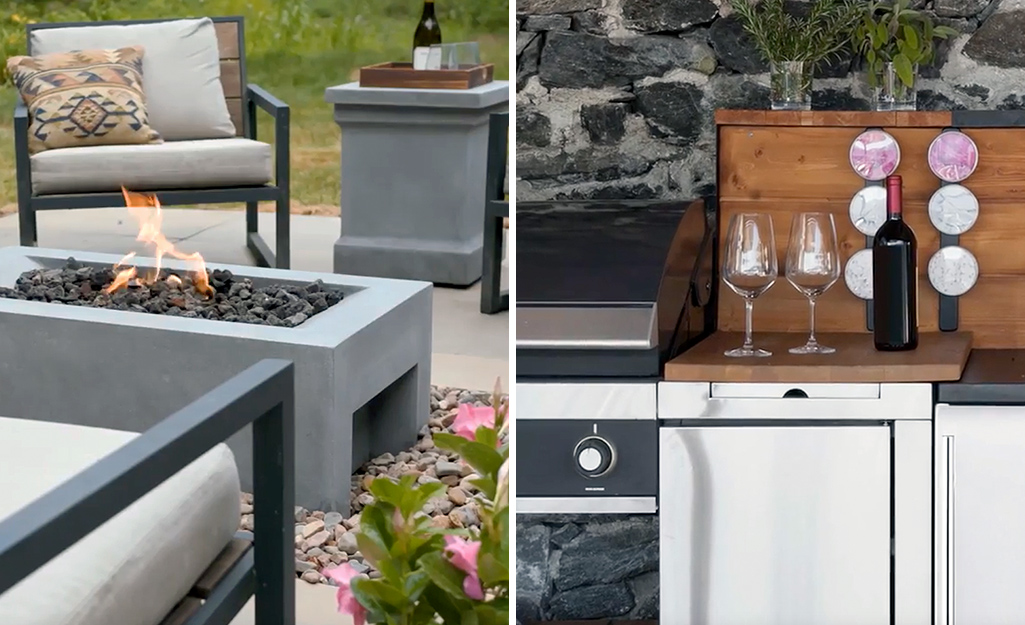
There are any number of customizations and additions that you can add to your outdoor kitchen to make it both more useful and more fun to use.
A separate bar area with its own bar sink can increase your entertainment space. Moving beverage prep and serving to its own area is especially good if you throw larger gatherings regularly. This ensures that people getting drinks won't impede the flow of the food prep work.
Consider outdoor lighting and climate control, including ceiling fans and outdoor heaters to be sure your space can be used comfortably through multiple seasons. Strategically placed awnings or pergolas can also help offer protection from all types of weather.
Make sure you also take cleanup into account. Install towel racks, paper towel holders and even napkin holders in convenient spots, making sure to keep them out of the way of heating elements. Well-placed and clearly marked areas for recycling and trash will make it easy for your guests to dispose of party debris and make your final cleaning run much simpler.
Start with a well-thought-out plan and a little professional guidance and you can be on your way to creating an outdoor kitchen that can be a focal point of your home entertaining any time of year.
Need help identifying a tool or material? Find products fast with image search in The Home Depot Mobile App. Snap a picture of an item you like and we’ll show you similar products.
